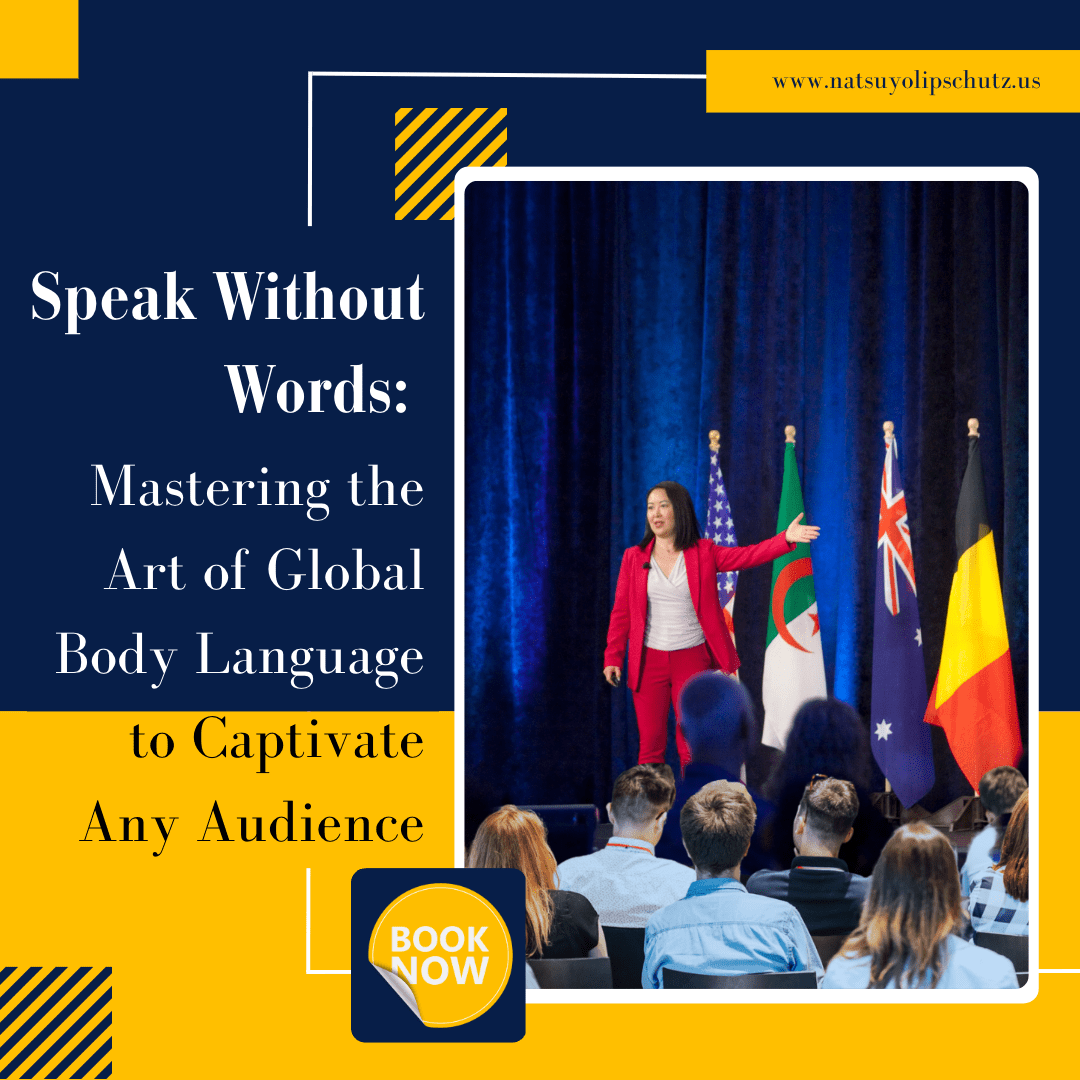
Body language is a critical component of effective public speaking, particularly when presenting to a global audience. As a speaker, your body language can convey confidence, authority, and engagement, or it can undermine your message and leave your audience feeling disconnected. In this blog post, we’ll explore strategies for mastering the art of global body language in public speaking.
- Understand Cultural Differences
Different cultures have different body language norms, which means that what works in one country may not work in another. Take the time to research the cultural norms of your audience and adjust your body language accordingly. Here is one of my favorite websites that teaches you different gestures from around the world: https://www.gestpedia.com/
- Use Gestures Effectively
Gestures can be a powerful tool for conveying your message and engaging your audience. However, it’s important to use them appropriately and avoid gestures that could be interpreted as offensive or disrespectful. For example, pointing your finger at the audience should always be avoided. Instead, use an open palm to be more respectful.
- Use Eye Contact
Eye contact is a key component of building rapport and trusts with your audience. Make sure to establish eye contact with members of your audience throughout your presentation, and hold it for a few seconds at a time to convey confidence and engagement. However, in a high-context culture, intense direct eye contact would make them feel uncomfortable. In such a case, use soft eye contact only when you are making an important point.
- Use Posture to Convey Confidence
Your posture can convey a lot about your confidence and authority as a speaker. Stand up straight, firmly plant your feet on the floor, keep your arms open, keep your shoulders back, and avoid fidgeting or slouching.
- Use Facial Expressions
Your facial expressions can convey a lot about your emotions and engagement with your audience. Make sure to smile and use appropriate facial expressions to convey your message effectively. According to Albert Mehrabian, we overwhelmingly deduce our feelings, attitudes, and beliefs about what someone says not by the actual words spoken, but by the speaker’s body language and tone of voice – words, tone of voice, and body language respectively account for 7%, 38%, and 55% of personal communication.
For example, imagine a speaker saying “I’m so excited to be here” with a frown face. You would probably think that the speaker is not really excited but rather the opposite. But if he said the same line with a huge smile, you would believe what he said.
- Use Vocal Variety
Your voice is an important component of your body language. Use variations in pitch, volume, and tone to convey emotion and engagement with your audience.
Practice, Practice, Practice: Finally, the key to mastering the art of global body language is practice. Rehearse your presentation in front of a mirror or with a colleague, and record yourself to identify areas where you can improve your body language.
By mastering the art of global body language, you can engage your audience, convey confidence and authority, and ultimately achieve greater success as a speaker. So, start practicing these strategies today and watch your public speaking skills soar!
The best shortcut to mastering the art of cross-cultural communication effectively is to get coached personally by Natsuyo. Every private coaching session is customized to your needs. She will guide you to find your unique ONE BIG MESSAGE®, uncover your story via The 6 C’s of Strategic Storytelling(TM), and deliver your message with confidence, authenticity, and power.


